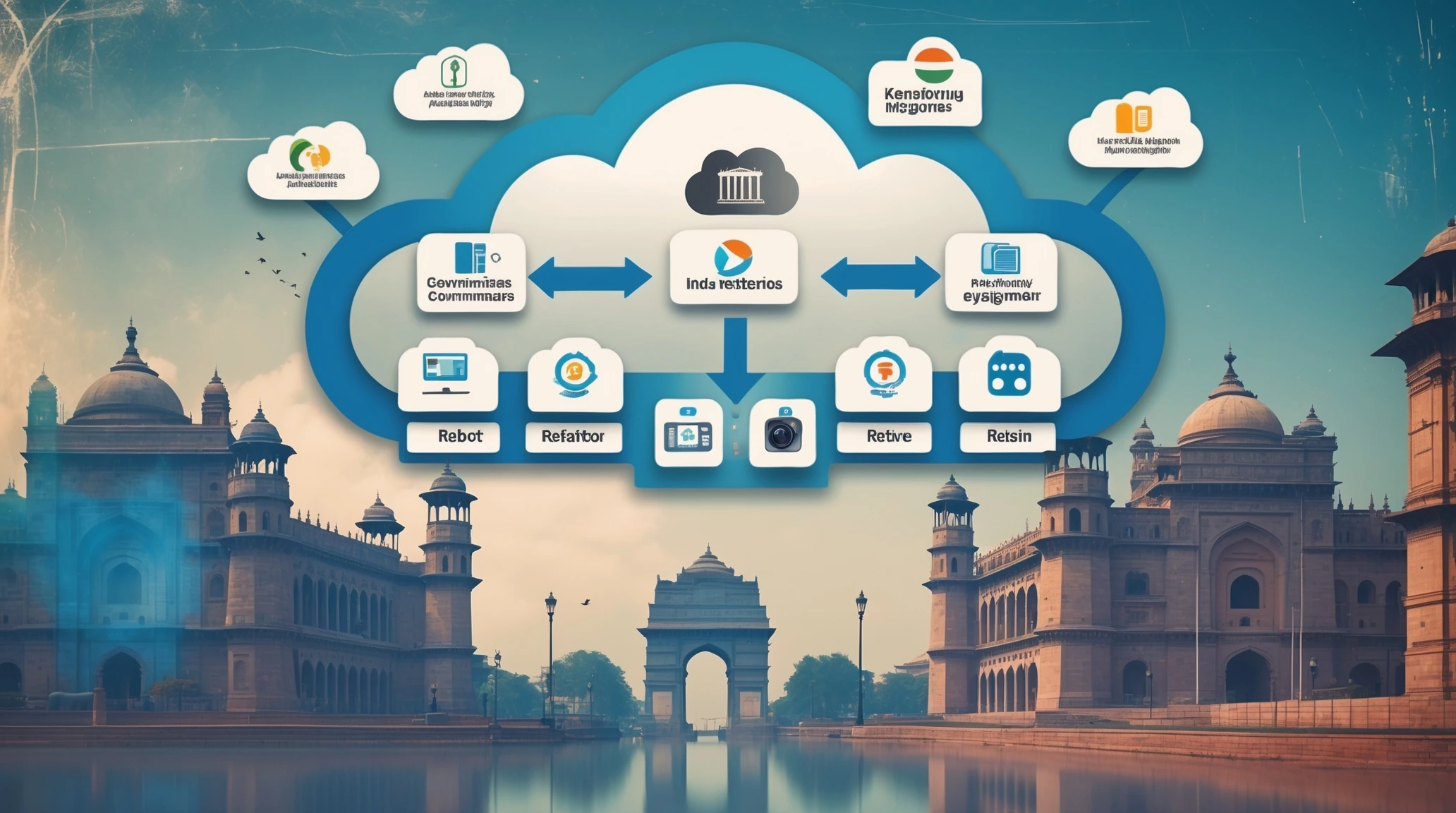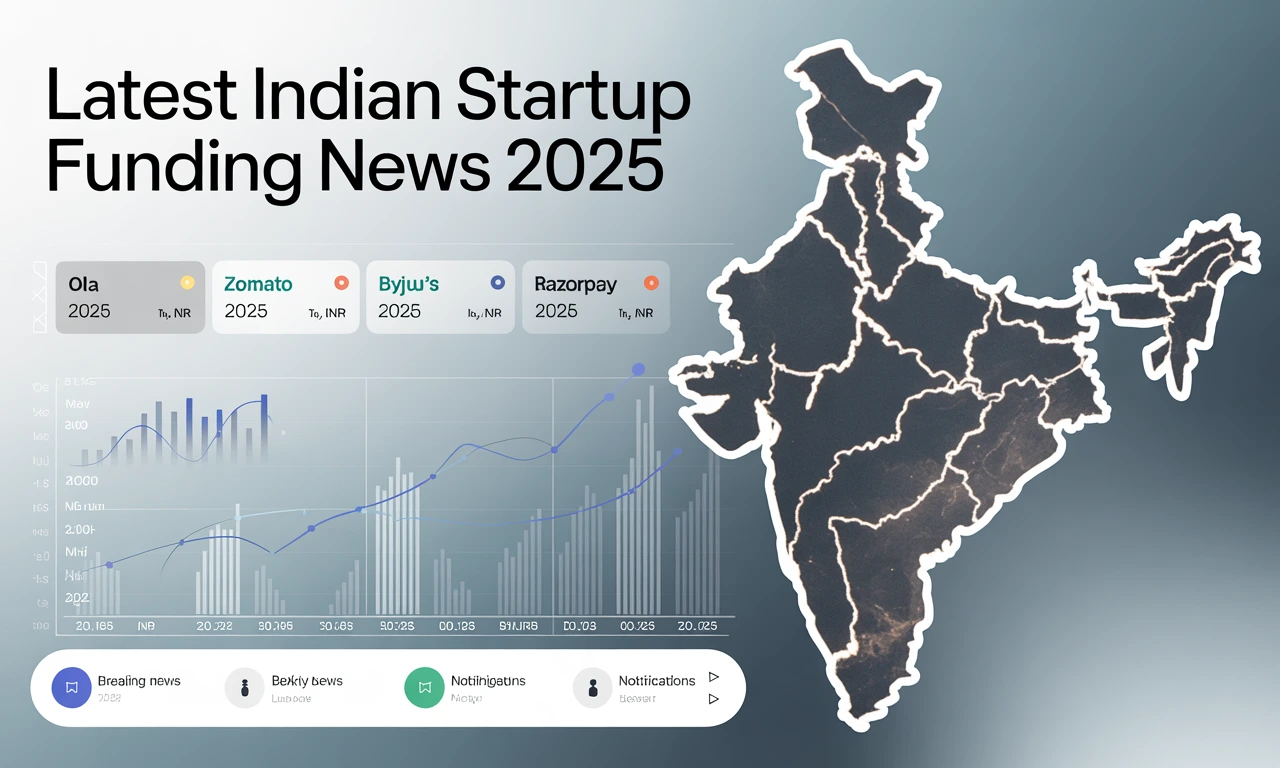Moving to the cloud isn't just a fancy tech upgrade anymore. For Indian businesses, it's becoming a must-do step to stay competitive. I've spent years helping companies make this important change, and I want to share what I've learned with you. The cloud market in India is growing super fast. By 2025, experts think it will be worth over $10 billion! This growth isn't happening by accident. Indian companies are realizing that the cloud gives them amazing benefits like:
- Spending less money on expensive computers and servers
- Being able to grow their business without buying lots of new equipment
- Working from anywhere, which became super important after the pandemic
- Getting access to cool new tech like AI and data analytics
But here's the thing - migration strategy from on-premise to cloud isn't as simple as flipping a switch. It needs careful planning and good choices along the way.
Cloud Migration Strategies For Indian Enterprises: Finding Your Path
When I talk to Indian business owners about moving to the cloud, many feel overwhelmed by all the options. Should they go "all-in" or take small steps? Which cloud provider makes the most sense for their needs? What about their existing systems? The truth is, there's no one-size-fits-all answer. The best cloud migration strategies for Indian enterprises depend on your specific situation. Let's break down your main options:
1. Rehosting (Lift and Shift)
Rehosting is like picking up your furniture from one house and putting it in another without changing anything. You take your current applications and move them to the cloud exactly as they are.
Why many Indian companies choose this:
- It's usually the fastest way to move to the cloud
- It doesn't require changing your applications
- It's less risky than other approaches
- You can still save money on hardware costs
A manufacturing company in Pune I worked with used this approach to move their inventory management system to AWS. They were able to complete the migration in just 6 weeks, and immediately saved 30% on their IT costs.
Read also: Top Indian Enterprise Success Stories
2. Replatforming (Lift, Tinker and Shift)
With replatforming, you make some small improvements to your applications during the move, but don't completely rebuild them. It's like moving to a new house and buying some new furniture while keeping most of your old stuff.
When this makes sense:
- You want better performance without a complete rebuild
- Your applications need some updates but are mostly working well
- You want more cloud benefits than pure rehosting offers
A financial services firm in Mumbai chose this approach for their customer database. They kept the core system the same but added cloud-based security features and improved their backup system during the migration.
3. Refactoring (Moving and Improving)
Refactoring means completely rebuilding applications to be "cloud-native." It's the most work but gives you the most benefits from the cloud. This is like designing and building a brand new house exactly the way you want it.
Benefits Indian businesses see with this approach:
- Applications run much faster and cost less to operate
- You can add new features more easily
- Systems scale automatically when you need more power
- Better reliability during high-traffic periods
A large e-commerce company in Bangalore used this strategy for their shopping platform. They completely rebuilt their checkout system to handle the massive spikes during festival sales. Their new system can now handle 20x more customers during peak times.
4. Repurchasing (Drop and Shop)
Sometimes, the smartest move is to stop using your current application altogether and switch to a ready-made cloud solution. This is especially true for things like email, HR systems, or customer relationship management.
When Indian businesses choose this path:
- Your current system is outdated or causing problems
- There are good cloud alternatives available (like Salesforce or Microsoft 365)
- You want to focus on your core business, not managing software
A healthcare provider in Chennai switched from their custom-built patient management system to a cloud-based healthcare platform. The move saved them 50 lakhs per year in maintenance costs and gave their staff better tools.
Choosing the Right Cloud Provider for Indian Enterprises
Picking the right cloud partner is crucial for your data migration strategy to cloud success. The major players in India include:
AWS (Amazon Web Services)
AWS has the biggest market share globally and in India. They have data centers in Mumbai and strong partnerships with Indian companies.
Good choice for: Large enterprises with complex needs, companies that need a wide range of services
Microsoft Azure
Azure has been growing quickly in India, especially with businesses that already use Microsoft products. They have data centers in Pune, Chennai, and Mumbai.
Good choice for: Companies heavily invested in Microsoft technologies, hybrid cloud setups
Google Cloud Platform
Google has been investing heavily in India, with a data center in Mumbai and plans for more. They offer strong AI and data analytics tools.
Good choice for: Data-intensive applications, companies focused on machine learning
Indian Cloud Providers
Don't overlook local options like Tata Communications, Sify, and NxtGen. These providers often understand Indian business needs better and may offer more personalized support.
Good choice for: Small and medium businesses, companies with specific compliance requirements
Read also: Indian Enterprise Startup Ecosystem 2025
Creating Your Cloud Migration Plan: Step by Step
Now let's talk about how to create a solid migration strategy from on-premise to cloud. I've helped dozens of Indian companies through this process, and these steps consistently lead to success:
Step 1: Assess Your Current Environment
Before moving anything, you need to know exactly what you have. This includes:
- Making a list of all your applications and how they connect to each other
- Identifying which data needs special protection (like customer information)
- Checking which systems are most important to your business
- Measuring how much computing power and storage you currently use
A hospital in Delhi I consulted with discovered during this step that they had 17 different systems storing patient data in different formats. This discovery completely changed their migration approach.
Step 2: Set Clear Goals
What exactly do you want to achieve by moving to the cloud? Common goals for Indian businesses include:
- Reducing IT costs by 20-30%
- Improving application performance
- Adding new capabilities like mobile access
- Better security and compliance
- Faster development of new features
Be specific! Instead of just saying "save money," try "reduce infrastructure costs by 25% within 12 months of migration."
Step 3: Choose Your Migration Strategy
Based on your assessment and goals, decide which strategy makes sense for each application:
- Critical but simple applications → Rehosting
- Important systems needing some improvements → Replatforming
- Core business applications → Refactoring
- Supporting systems with good alternatives → Repurchasing
It's perfectly normal to use different strategies for different systems. A retail chain in Hyderabad used rehosting for their accounting system but chose to repurchase for their HR management.
Step 4: Plan for Data Migration
Data migration strategy to cloud deserves special attention because it's often the trickiest part. Consider:
- How much data needs to move (and how long it will take)
- Whether you need to clean or restructure data before moving
- How to keep data secure during the transfer
- Testing to make sure nothing gets lost or corrupted
For large datasets, you might need to use physical data transfer (where the cloud provider sends you special storage devices) rather than sending everything over the internet.
Step 5: Address Security and Compliance
Cloud security works differently than on-premises security. Make sure you:
- Understand which security controls are your responsibility vs. the cloud provider's
- Have plans for data encryption, access controls, and monitoring
- Check compliance with regulations like India's Personal Data Protection Bill
- Consider data residency requirements (keeping certain data in India)
A banking client in Kolkata created a detailed security matrix showing exactly which controls would be implemented at each layer of their cloud environment.
Step 6: Create a Detailed Timeline
Break your migration into smaller phases with clear milestones. A typical approach for Indian enterprises includes:
- Start with non-critical applications to gain experience
- Move development and testing environments next
- Gradually transition production systems, starting with less critical ones
- Finally migrate your most important business applications
This phased approach reduces risk and lets your team build cloud skills along the way.
Common Challenges for Indian Enterprises During Cloud Migration
Even with the best cloud migration strategies for Indian enterprises, you'll face some hurdles. Here are the most common challenges I've seen and how to overcome them:
Connectivity Issues
India's internet infrastructure can be inconsistent in some areas, which affects cloud performance.
Solution: Consider using dedicated connections like AWS Direct Connect or Azure ExpressRoute rather than regular internet. Also, design applications to work well with lower bandwidth.
Skills Gap
Many IT teams in India have deep knowledge of traditional systems but less experience with cloud technologies.
Solution: Invest in training your team early in the process. Consider bringing in experienced consultants to work alongside your staff and transfer knowledge.
A pharmaceutical company in Ahmedabad had their IT team shadow cloud consultants for three months before taking over management of their cloud environment.
Cost Management
Without proper monitoring, cloud bills can sometimes surprise you.
Solution: Set up detailed cost tracking from day one. Use cloud provider tools like AWS Cost Explorer or Azure Cost Management. Consider third-party tools for more complex environments.
Data Privacy and Sovereignty
Indian regulations around data storage and processing are evolving quickly.
Solution: Work with legal experts familiar with both Indian regulations and cloud computing. Choose providers with data centers in India for sensitive information.
Success Stories: Cloud Migration Wins From Across India
Let me share some real success stories from Indian companies that got their cloud migration right:
Retail Chain Transforms Customer Experience
A large retail chain with 200+ stores across India moved their point-of-sale and inventory systems to the cloud. The results were impressive:
- 99.9% system availability (up from 96%)
- Real-time inventory visibility across all locations
- 40% faster checkout times
- New features deployed weekly instead of quarterly
Their CIO told me: "We're not just saving money—we're actually delivering better experiences to our customers."
Manufacturing Company Improves Supply Chain
A medium-sized auto parts manufacturer in Tamil Nadu moved their ERP and supply chain systems to Microsoft Azure. Benefits included:
- 35% reduction in IT infrastructure costs
- Better integration with supplier and customer systems
- The ability to access production data from anywhere
- Improved disaster recovery capabilities
The company successfully weathered COVID-19 disruptions because their cloud-based systems allowed for remote management of operations.
Read also: Indian Enterprise Digital Transformation Trends
Fintech Startup Scales Rapidly
A payment processing startup in Bangalore built their entire platform as cloud-native from day one. This decision allowed them to:
- Scale from 50,000 to 5 million transactions per day in 18 months
- Automatically increase capacity during festival seasons
- Launch new payment methods in days instead of months
- Keep costs low during their growth phase
Their CTO credits their cloud-first approach as "the single most important technical decision we made."
Budget-Friendly Cloud Migration Approaches for Indian SMEs
Not every business has millions to spend on cloud migration. Here are some approaches that work well for smaller Indian companies with tighter budgets:
Start With a Single Application
Instead of moving everything at once, pick one application to migrate first. This limits your risk and lets you learn before committing more resources. A small educational institution in Jaipur started by moving just their student portal to the cloud. Once they saw the benefits and gained confidence, they gradually moved other systems.
Use Managed Services When Possible
Managed services let you use cloud capabilities without needing to manage the underlying infrastructure. This reduces the technical expertise required. For example, instead of setting up database servers, use managed database services like Amazon RDS or Azure SQL Database.
Consider Cloud Provider Programs for Startups
AWS, Microsoft, and Google all offer special programs that give startups free credits and support. These can significantly reduce your initial cloud costs. A healthcare startup in Hyderabad received $100,000 in AWS credits through such a program, giving them room to experiment and grow.
Optimize Before You Migrate
Before moving to the cloud, look for ways to simplify your current systems:
- Remove unused or redundant applications
- Archive old data you rarely access
- Consolidate similar systems
A textile business in Surat reduced their application count from 22 to 14 before migration, which simplified their move and lowered their cloud costs.
Measuring Success: Did Your Cloud Migration Work?
How do you know if your cloud migration was successful? Here are key metrics to track:
Technical Performance
- System availability (uptime)
- Application response times
- Frequency of errors or incidents
- Time to deploy new features or fixes
Business Outcomes
- Total cost of ownership compared to on-premises
- Business process improvements
- New capabilities enabled
- Staff productivity gains
User Satisfaction
- Employee feedback on system performance
- Customer experience impacts
- IT team workload changes
A logistics company in Mumbai created a simple dashboard that showed these metrics before and after migration. This made it easy to demonstrate the value to company leadership.
Future-Proofing: What's Next After Your Migration?
Moving to the cloud is just the beginning. To get the most value, consider these next steps:
Cloud Optimization
Once your systems are in the cloud, look for ways to make them more efficient:
- Right-sizing resources to match actual usage
- Using auto-scaling to adjust capacity automatically
- Taking advantage of reserved instances for predictable workloads
- Implementing serverless architectures where appropriate
Build a Cloud Center of Excellence
Create a team responsible for cloud governance, best practices, and knowledge sharing across your organization. A large IT services company in Hyderabad established a Cloud Center of Excellence that reduced their cloud spending by 28% while improving performance.
Explore Advanced Cloud Services
The cloud offers many capabilities beyond basic infrastructure:
- Artificial intelligence and machine learning
- Internet of Things (IoT) platforms
- Advanced analytics and big data processing
- Container orchestration with Kubernetes
These services can open new business opportunities or solve problems that were previously too expensive to tackle.
Final Thoughts: The Cloud Journey Is Ongoing
The most important thing to remember about cloud migration is that it's not a one-time project—it's an ongoing journey. Technology keeps changing, and your business needs will evolve. The best cloud migration strategies for Indian enterprises include planning not just for the migration itself, but for how you'll manage and optimize your cloud environment for years to come. I've seen countless Indian businesses transform themselves through smart cloud adoption. With thoughtful planning and execution, your organization can join them in building a more agile, efficient, and innovative future.













